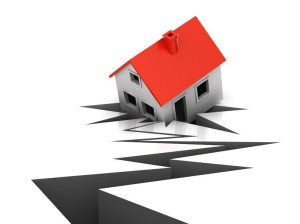Structural engineering is a specialization that focuses on designing, creating, and building modern structures. Our structural engineering team regularly works on everything from bridges and commercial structures to medical and even government buildings, but it’s their knowledge of seismic analysis that truly stands out.
Here at McNeil Engineering, the structural engineering team utilizes the latest in software innovation for analysis, design and drawing production. Our access to these state-of-the-art technologies ensures our professionals can quickly evaluate and investigate alternative structural systems while taking steps to fortify a project against natural disasters prior to completion.
Structural engineering to combat earthquakes
Have you ever wondered why some earthquakes do more damage than others, even if they register at a similar number on the seismic scale? Usually, this has a lot to do with the structural integrity of the buildings near an earthquake’s epicenter.
For example, structures that are made out of mud, stucco or bricks are far more likely to tumble and collapse under duress, whereas buildings that have been fortified with support elements are much more likely to withstand even serious earthquakes.
Significant earthquakes in California history
 The entire West Coast of the United States is known for seismic activity, but it’s California that has the most renown.
The entire West Coast of the United States is known for seismic activity, but it’s California that has the most renown.
In fact, according to the USGS, the state of California experiences an average of 10,000 earthquakes each year.
The majority of these are non-destructive, but some have registered as high as 7.9 on the richter scale. Here’s a closer look at four of California’s most legendary earthquakes:
- January 1857 – 7.9, Fort Tejon
- April 1906 – 7.9, San Francisco
- March 1872 – 7.8, Owens Valley
- July 1952 – 7.5, Kearn County
Not even geologists can predict when the next earthquake will occur, but most experts agree that California is due for a significant seismic event within the coming decade.
Many business owners don’t have earthquake insurance
Even with that information available, a majority of California home and business owners are without earthquake insurance.
A recent study by KPIX found that only “about 10 percent of insured homeowners also have earthquake coverage.” That means the other 90% of Californians are uninsured and just hoping for the best.
To be clear, earthquake insurance does not guarantee that the government will rebuild your home or business, but it does provide for engineering modifications to a damaged structure. According to KPIX, the California Earthquake Authority has some “$15 billion in reserves,” so it makes sense to invest.
Do options exist outside of earthquake insurance?
If purchasing earthquake insurance isn’t an option, what steps can you take to protect your business? According to the California Earthquake Authority, you should:
- Determine how close your home or business is to a fault
- Familiarize yourself with what kind of foundation each structure has
- Decide if you can mitigate damage via a retrofit
Retrofitting and seismic engineering
The process of retrofitting involves taking an already completed structure and adding additional components in an effort to fortify it. You regularly access retrofitted structures, you probably just didn’t realize it.
Following the 1994 Northridge Earthquake, a number of interstate overpasses and bridges were retrofitted with steel girders. Exploratorium.edu notes that in most cases, size and weight were also added to bridge footings, a process that firmly secured these structures to the ground.
Seismic retrofits are one of our specialties
Our structural engineering team has worked on multiple projects where we were able to fortify and strengthen structures in earthquake-prone areas. In fact, we regularly assist clients with:
- Seismic analysis
- Force protection blast analysis and design
- Repair, restrengthening and retrofitting of structures
- Structural damage and failure analysis
- Structural investigation and reports
As a California-based business owner, it’s critical that you protect your assets. Taking preventative measures in preparation for an upcoming earthquake is an easy way to ensure your building can handle whatever comes your way. To learn more about our capabilities, or to get in touch, we invite you to visit our website. http://mcneilengineering.com








